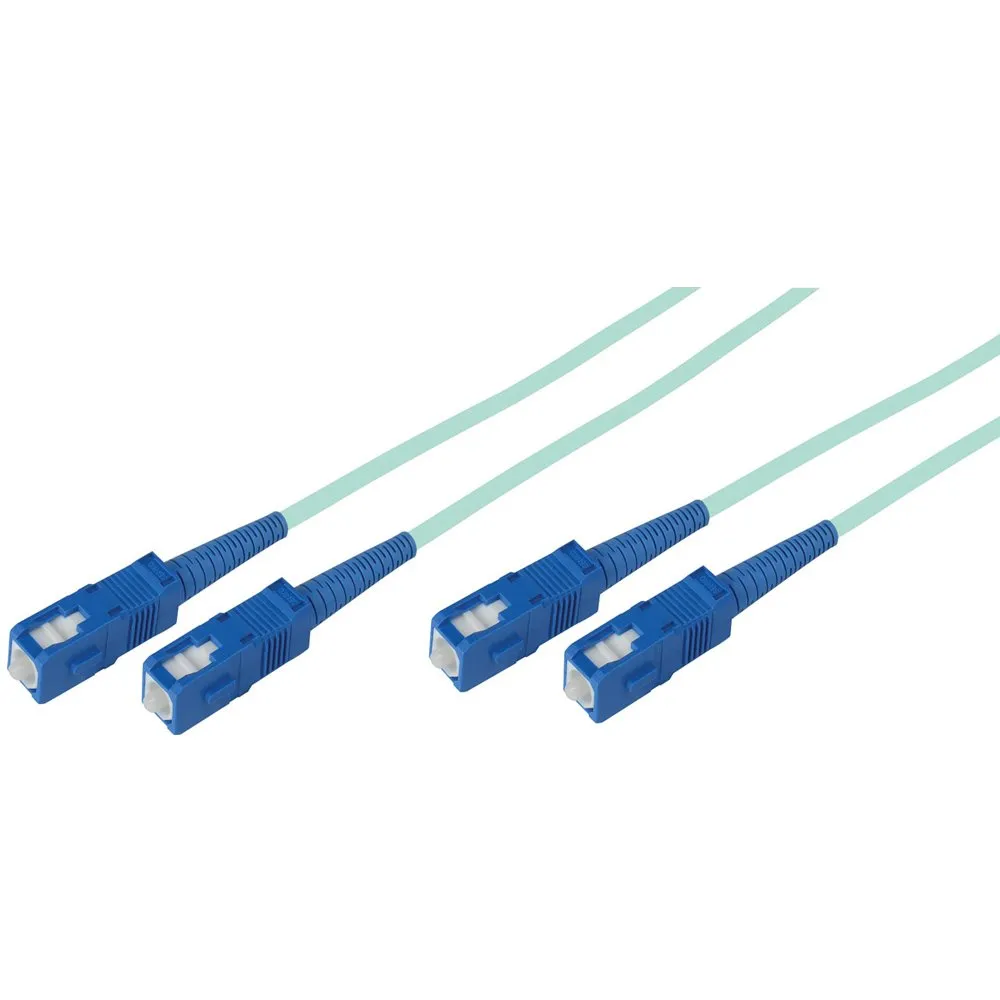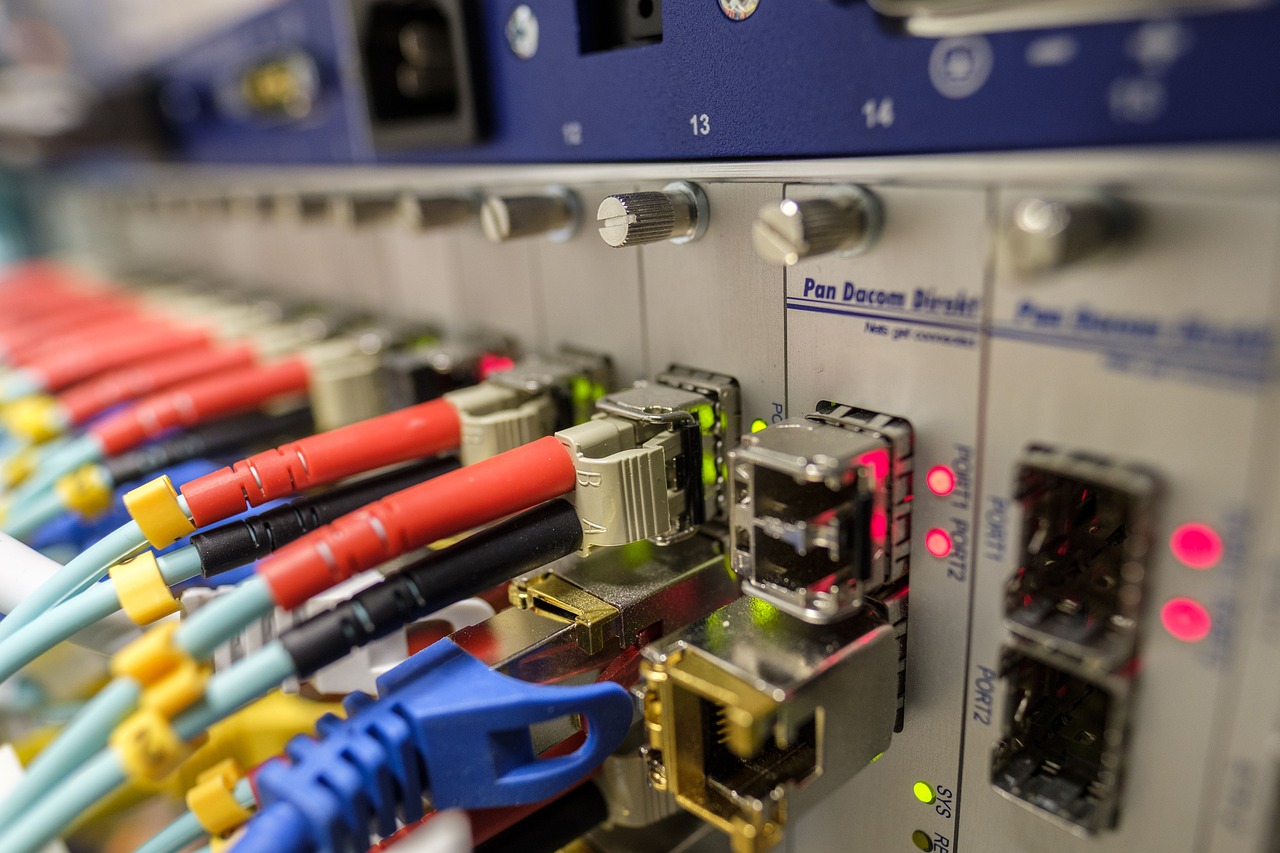Multi-mode Duplex Fiber Optical Patch Cable

What is a Fiber Optical Patch Cable?
In modern communication systems, Fiber Optical technology plays a crucial role in transmitting data over long distances. Unlike traditional copper wires, Fiber Optical cables use light signals to transfer information, resulting in higher bandwidth and faster data transmission. The utilization of light enables Fiber Optical cables to carry large amounts of data with minimal signal degradation.
The Role of Fiber Optical in Modern Communication
The primary function of Fiber Optical technology in modern communication is to facilitate the transmission of data. By leveraging the principles of light refraction and total internal reflection, Fiber Optical cables can effectively transmit digital information across vast distances. This method ensures that the transmitted data remains secure and free from electromagnetic interference.
How Fiber Optical Transmits Data
When data is sent through a Fiber Optical cable, it is first converted into light signals. These signals travel through the core of the cable via multiple reflections, maintaining their integrity throughout the journey. Upon reaching the destination, the light signals are then converted back into their original digital form, allowing for seamless and reliable data transmission.
Types of Fiber Optical Cables
There are two primary types of Fiber Optical cables: single-mode and multi-mode. Each type serves specific purposes based on factors such as distance requirements and network infrastructure.
Single-mode vs. Multi-mode
Single-mode: Designed for long-distance transmissions, single-mode cables utilize a smaller core size to enable light signals to travel more directly, making them ideal for high-speed and long-range connections.
Multi-mode: With a larger core size, multi-mode cables are suitable for shorter distances and are commonly used in local area networks (LANs) or data centers where high bandwidth is essential within limited ranges.
The Basics of Multi-mode Duplex Cables
In the realm of fiber optic technology, Multi-mode cables play a pivotal role in facilitating high-speed data transmission within limited ranges. Understanding the fundamental characteristics that make a cable Multi-mode is essential for optimizing network performance and efficiency.
What Makes a Cable Multi-mode
The defining feature of a Multi-mode cable lies in its larger core size, typically ranging from 50 to 62.5 microns. This increased core size allows for multiple light modes to be transmitted simultaneously, enabling the cable to carry more data over short distances. The broader core diameter permits various light signals to travel through the cable, resulting in a higher capacity for data transmission.
The Significance of Core Size in Multi-mode Cables
The core size of Multi-mode cables directly influences their ability to accommodate numerous light modes, which contributes to their enhanced data-carrying capacity. By supporting multiple transmission paths, these cables can effectively handle high-bandwidth applications within confined areas such as local area networks (LANs) and enterprise data centers.
Understanding Duplex Configuration
In the context of fiber optic communication, the term "duplex" refers to the arrangement of fibers within a cable that enables bidirectional data flow. This configuration is particularly crucial for ensuring seamless and simultaneous data transmission and reception.
Duplex vs. Simplex: A Comparison
Duplex: A duplex configuration consists of two fibers within a single cable, allowing for both transmitting and receiving signals concurrently. This setup is commonly utilized in scenarios where continuous and real-time data exchange is imperative, such as in network backbones and critical infrastructure systems.
Simplex: In contrast, simplex cables contain only one fiber and support unidirectional communication. While suitable for applications requiring one-way data transfer, they lack the bidirectional capabilities inherent in duplex configurations.
By harnessing the duplex architecture, organizations can establish robust communication infrastructures that facilitate efficient two-way data exchange across various networking environments.
Understanding the 2.0mm SC/UPC 62.5/125um Specification
In the realm of fiber optic technology, the 2.0mm SC/UPC 62.5/125um specification holds significant importance in determining the capabilities and compatibility of a specific patch cable. This specification provides valuable insights into the physical attributes and performance characteristics of the cable, enabling network engineers and technicians to make informed decisions regarding its deployment.
Breaking Down the Specification
The Meaning Behind 2.0mm SC/UPC
The designation 2.0mm in the specification refers to the outer diameter of the cable, indicating its physical size and form factor. Cables with a larger outer diameter often offer enhanced durability and protection, making them suitable for demanding environments where resistance to external factors is crucial.
The acronym SC/UPC denotes the type of connector attached to each end of the cable. The "SC" connector, short for Subscriber Connector or Square Connector, is widely recognized for its simple push-pull mechanism, ensuring secure connections without requiring excessive force during installation or removal. Additionally, "UPC" stands for Ultra Physical Contact, signifying that the connector's end face has been polished to achieve minimal insertion loss and back reflection.
Decoding 62.5/125um
The numerical values 62.5/125um correspond to the dimensions of the fiber core and cladding within the cable. Specifically, it represents a multi-mode fiber with a core size of 62.5 microns and a cladding diameter of 125 microns.
The 62.5 micron core size indicates that this cable is optimized for multi-mode transmission, allowing it to accommodate multiple light modes simultaneously over short distances within local area networks (LANs) and similar applications.
Furthermore, the 125 micron cladding serves as a protective layer around the core, preserving signal integrity and minimizing signal loss due to environmental factors or handling.
Applications of This Specific Patch Cable
Where This Cable Fits in the Tech World
The 2.0mm SC/UPC 62.5/125um patch cable finds widespread application in various networking environments where multi-mode fiber connectivity is essential for high-speed data transmission over limited distances.
Local Area Networks (LANs): In LAN setups within office buildings or campus environments, this specific patch cable proves instrumental in establishing reliable connections between network switches, routers, and end-user devices.
Data Centers: Within enterprise data centers, where high-density cabling solutions are prevalent, this patch cable facilitates seamless connectivity between servers and networking equipment while supporting efficient data transfer for critical business operations.
Telecommunication Infrastructure: In telecommunication networks where multi-mode fiber is utilized for interconnecting communication equipment and transmitting voice and data signals over short distances, this patch cable plays a vital role in maintaining robust connectivity.
By understanding these specifications and their practical applications, network administrators can effectively integrate this specific patch cable into their infrastructure to meet their diverse networking needs while ensuring optimal performance.
The Importance of Being RoHS Compliant
In the realm of technology and manufacturing, ensuring RoHS compliance is a critical aspect that significantly impacts the health and environmental sustainability of products.
What Does RoHS Compliant Mean?
RoHS compliance refers to adherence to the Restriction of Hazardous Substances directive, which restricts the use of specific hazardous materials in electronic and electrical equipment. This directive aims to minimize the environmental impact of electronic waste by reducing the presence of substances such as lead, mercury, cadmium, and various other harmful elements.
The Health and Environmental Benefits
By embracing RoHS compliance, manufacturers contribute to safeguarding public health and preserving the environment. Products that adhere to these regulations pose reduced risks of exposure to hazardous substances for consumers and workers involved in their production. Additionally, the restricted use of toxic materials minimizes soil and water contamination, promoting ecological sustainability.
Why RoHS Compliance Matters for Fiber Optical Cables
RoHS compliance holds particular significance in the context of fiber optical cables due to their widespread utilization in critical communication infrastructure.
Ensuring Safety and Sustainability in Tech Products
Embracing RoHS compliant standards within fiber optical cable manufacturing ensures that these essential components align with environmentally responsible practices while upholding stringent safety measures. By adhering to these regulations, fiber optical cables contribute to sustainable technological advancements by minimizing adverse environmental impacts throughout their lifecycle.
See Also
Comprehending the Telecom Fiber Interconnection with SC UPC Connector
Choosing the Perfect Custom Duplex OM1 Multimode Fiber Patch Cable
Contrasting LC/UPC and SC/UPC Connectors for Fiber Patch Cables
Premium Singlemode Fiber Optic Patch Cables with LC/UPC Connectors
Resolving Fiber Interconnection Issues with SC UPC Field Assembly Connectors


